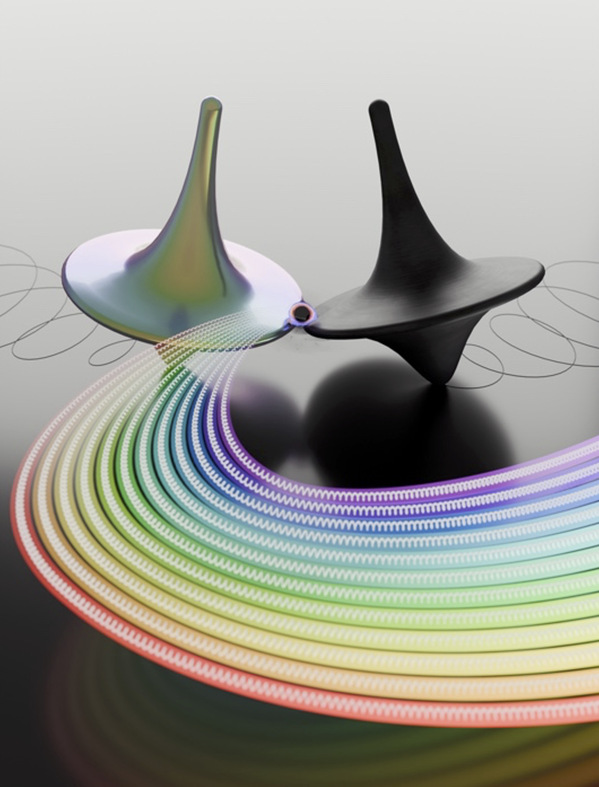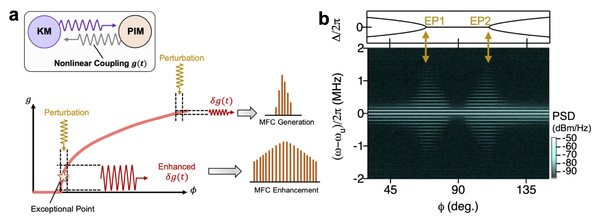Optical frequency comb, composed of discrete spectral lines, derives the name from its presenting a uniform and comb-like distribution of signals in the frequency domain. Frequency dimension has its significance as emphasized by Nobel laureate Arthur Schawlow’s quote, “Never measure anything but frequency”. The optical frequency comb significantly enhances the precision of frequency measurements, serving as a critical component in satellite navigation, precise distance measurement, atomic clocks, molecular identification, and various other fields. These advancements led to its discoverers being honored with the 2005 Nobel Prize in Physics. The widespread application of optical frequency combs has inspired research into other forms of frequency combs. In particular, magnons formed by collective excitations of electron spins possess unique advantages, such as immunity to Joule heating, and their flexible modulation properties serve as an excellent platform integrating various advantages from different entities. However, conventional magnonic frequency combs, relying on material nonlinear effects, require high power densities to generate combs with limited teeth. This limitation constrains their transformation into efficient, on-chip integrated, and tunable magnonic functional devices.
In response to the above challenges, Professor Lu Wei’s team from the School of Physical Science and Technology (SPST) at ShanghaiTech University, in collaboration with Shanghai Institute of Technical Physics, Chinese Academy of Sciences (CAS), and the School of Physics at Shandong University, achieved a significant improvement in the efficiency of magnonic frequency comb generation by leveraging exceptional points with pump-induced magnon mode (PIM, illustrated in Figure 1). This research not only increased the bandwidth and the tooth number of the magnonic frequency comb but also lowered its excitation threshold, setting a record with a 32-tooth magnonic frequency comb. This groundbreaking achievement was published in a paper titled “Enhancement of magnonic frequency combs by exceptional points” in the journal Nature Physics.

Figure 1: Exceptional coupling state between magnon modes (visualized as two gyroscopes in the schematic figure) enhances the efficiency of generating magnonic frequency combs (depicted as multicolored bands in this schematic figure).
The recently discovered PIM (Phys. Rev. Lett. 130, 046705 (2023)) offers distinct advantages. Unlike conventional magnon modes, its magnetic moment is efficiently controlled by microwave pumping, resulting in lower magnetic moments and damping. At lower driving powers, it can more easily induce large precession angles, leading to significant nonlinear effects and enabling the formation of magnonic frequency combs (as shown in Figure 2a). By phase modulation, precise control over PIM coupling and nonlinear response is achieved, thereby resulting in significant growth of magnonic frequency combs (Figure 2b). It is worth noting that this enhancement does not rely on increasing the driving power, but on optimizing the nonlinear coupling process itself.

Figure 2: Enhancing magnonic frequency combs using exceptional points.
In this innovative study, the team ingeniously integrated the key concepts of magnonic frequency combs and non-Hermitian exceptional points, demonstrating the ability to manipulate nonlinear magnon modes via dissipation. This bears important implications for both non-Hermitian physics and magnonics. The developed method for efficient magnonic frequency comb generation not only advances research on wideband, discrete, and coherent spin wave sources based on magnonics but also holds promise for constructive contributions to sensitive detection applications.
The research findings were collaboratively achieved by ShanghaiTech University, Shanghai Institute of Technical Physics, CAS, Shandong University, and other institutions, with ShanghaiTech University as the first affiliation. SPST master student Wang Congyi is the first author. Professor Rao Jinwei from Shandong University, Professor Yao Bimu from Shanghai Institute of Technical Physics, CAS, and Professor Lu Wei are the co-corresponding authors of this paper.
*This article is provided by Prof. Lu Wei

